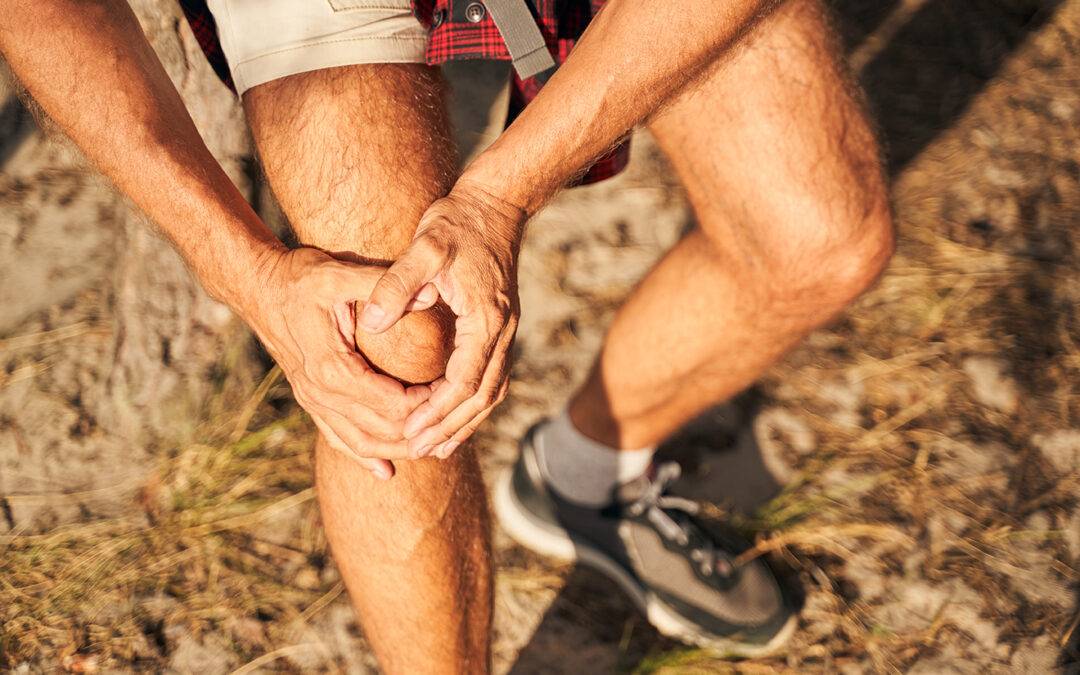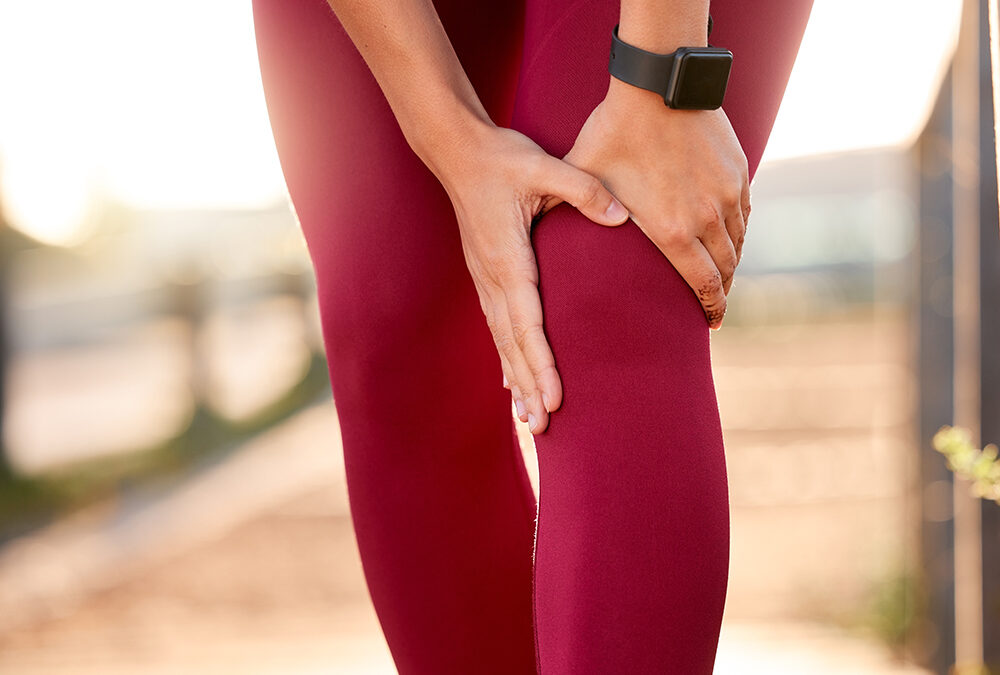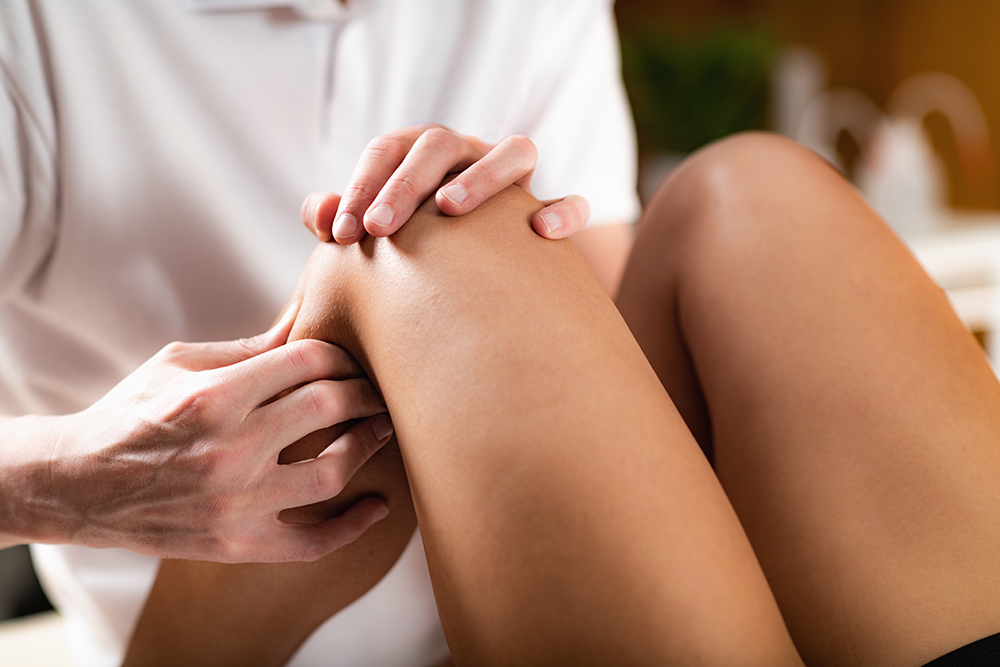Contents
When your knee is hurting, your first instinct might be to rest and keep it immobilized. This isn’t always the best way to reduce your pain, though. Depending on what’s causing your knee pain, some gentle movement and strengthening exercises might be more effective in the long run.
Many times, knee pain is a result of overuse and repetitive movements. Some people have a higher risk for knee injuries, for instance, people who have to kneel a lot at work. People who install flooring or roofing are more likely to develop overuse injuries in their knees. Athletes in sports like running and soccer also have a high risk of knee injuries. When you have a weakness or an imbalance, repetitive strain can quickly lead to irritation and inflammation. In most cases like this, exercising and stretching your leg muscles and glutes can help correct it.
This article lists eight physical therapy exercises that can help you improve your knee stability for less pain.
Are stability exercises good for knee pain?
Knee pain can happen for a few different reasons. It can be a musculoskeletal issue, an overuse injury, a traumatic injury or a result of aging. When your condition isn’t severe, and when your knee pain isn’t caused by a traumatic injury, stability exercises may help. If your pain is intense or if it comes on quickly after an injury, it’s best to check with a physical therapist before trying any stability exercises at home.
Stability exercises strengthen the muscles and promote proper movement in soft tissue fibers around your knee joint. Doing these exercises increases circulation in the area, bringing fresh nutrients. This helps heal minor injuries and relieve pain from arthritis. In the long term, stability exercises create more support for your knee joint and correct any weaknesses or imbalances putting strain on it. They also also help the knee absorb shock and prevent injury.
Physical therapy exercises for knee stability
You don’t need any special equipment to do knee stability exercises at home. Just wear some loose-fitting clothing and supportive athletic shoes. The most you will need for these exercises is a wall with a smooth surface and a stair or a platform you can step onto easily.
Try these exercises at home to strengthen your legs and create stability for your knee joints:
- Lunges — Do sets of 15 lunges in different directions: forward, backward, and side to side. Begin with your feet together and then step one foot out far enough that you feel a stretch in your stationary leg. Step slowly and with control of your movement. You can alternate between forward lunges with your right and left leg for one set. Then, do side-to-side and alternating backward lunges. These work your quadriceps, hamstrings and glutes.
- Step-ups — Use a stair or an aerobics platform for this exercise, but make sure it’s only about half the height of your knee or lower. Face the platform and step up with one leg first and then the other; then step down in the same order. Do one set this way and then turn sideways to repeat on your right side and then left side. These work your quadriceps and gently get the connective tissue in your knees moving.
- Straight-leg lifts — For this one, you’ll need to start seated on the floor with your legs stretched out in front of you. Place one foot on the floor so your knee is pointing upward. You can place your hands on the floor just behind your hips to steady yourself. Lift the leg that’s outstretched until your knee is level with the opposite. Be sure to keep your leg straight. Do one set and then switch to the other side. These strengthen the muscles above and below your knee joint to create stability.
- Wall squats — You can do these with an exercise ball or without one. Stand with your back to a wall and keep it touching as you move your feet one step forward. If you’re using an exercise ball, your feet will be a bit farther from the wall. Slowly slide down until your thighs are parallel to the floor and then slide back up. As you do this more, you can try holding the position longer. These work your glutes, quadriceps and core muscles.
- Calf raises — Stand with your feet shoulder width apart and place one hand on a railing or a wall for support. Slowly raise yourself up onto your tiptoes and then lower back down with control. As the name suggests, this exercise works your calf muscles. It also stretches the tendons at the bottom of your knee joints.
Band exercises for knee stability
Resistance bands are a versatile type of fitness equipment to have at home. They don’t take up much space, they’re inexpensive and you can find them at any sporting goods store. Some bands are a complete loop and some are one solid strip. They may be made of rubber or cord. You can even find sets of bands with different amounts of resistance.
Grab your resistance band for these knee stability exercises:
- Lateral walks — Loop the band around the back of your ankles and pull the other end out in front of you, keeping it tight. Step your right foot out to the side and bring it back to starting position; then do the same with your left foot.
- Hamstring curls — You can do this one lying face down or standing up with a chair in front of you. You’ll need to fix one end of the band to something sturdy or the chair so it loops around the back of one foot. Slowly bend your knee and then straighten it to work your hamstring. Then repeat with the other side.
- Knee extensions — Fasten your exercise band to something sturdy and sit in a chair facing the opposite direction. Loop the band around the sole of your foot and move the chair forward until you can hold the band taut with some resistance when your foot is extended. Bend your knee and then straighten your leg slowly for about 15 reps. You’ll feel this exercise in your front thigh (quadriceps) muscles.
Get a personalized plan for knee pain relief at Lattimore PT
Knee pain is often a sign that you’re developing an injury or a condition like tendinitis or arthritis. There are likely some treatments that can slow or even reverse the process, depending on the condition. When you see a physical therapist, they’ll begin with tests to find out what’s happening and what kinds of treatment will help. At Lattimore PT, we create personalized treatment plans for each patient. Yours may have a few different phases to help you heal, repair and strengthen your knee. The repairing and strengthening phases of treatment will likely include exercises like the ones listed here. Our PTs have other manual therapy techniques and treatment modalities they can use to reduce your pain in as little as one visit.
PTs at all of our locations specialize in general orthopedic care. We have a lot of experience treating different types of knee pain. Many of our PTs have their Certification in Orthopedic Manual Physical Therapy (COMT). This means they have special training in assessing musculoskeletal conditions and selecting specific treatments and exercises based on each individual’s symptoms.
Don’t wait to see if your knee pain will go away on its own. If it’s been bothering you for a week or more, you should get an assessment. New York is a direct access state, so as long as your insurance doesn’t require a referral, you can make an appointment today. Find a Lattimore PT location near you or contact us if you have any questions. Let’s get your knee moving with less pain so you can get back to doing what you love.



